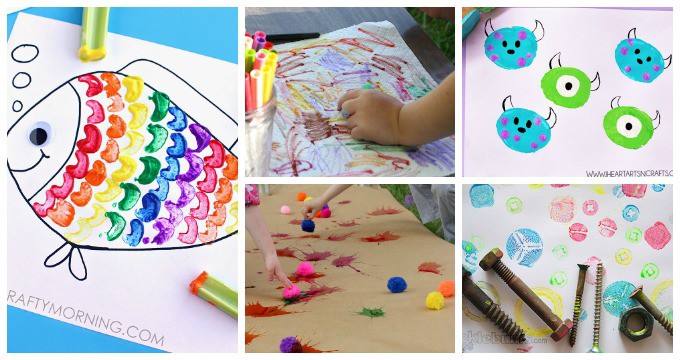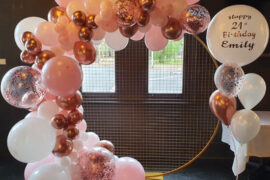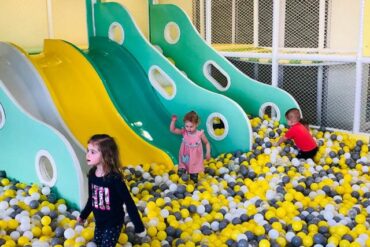Unleash Your Toddler’s Creativity: Art Activities for 3 Year Olds!
Hey there, super-parents! Are you on the hunt for some whimsical, colorful, and easy-to-set-up art activities for your energetic 3-year-old? Well, you’ve hit the jackpot! Art is not only about fun; it’s a vital part of your toddler’s development. It helps in fine motor skills, cognitive development, and emotional expression. So let’s dive into a world of creativity with art activities that are just perfect for your little ones!
Why Choose Art Activities for Your Toddler?
Art is like a rainbow of possibilities for your toddler; it opens doors to a world where they can mix colors, play with textures, and let their imagination soar! Here’s why you should encourage your 3-year-old to get artsy:
- Cognitive development: Through art, toddlers learn cause and effect (I mix red and yellow and I get…orange!), enhance problem-solving skills, and understand concepts like size and shape.
- Motion skills: Holding pencils, crayons, and paintbrushes aids in fine motor refinement, while activities like tearing paper are great for building those tiny muscles in their hands.
- Emotional growth: Art allows toddlers to express their feelings in a safe and constructive way, whether it’s happiness splattered with bright colors or a more nuanced mixed palette of curiosity.
- Social skills: Sharing paint, collaborating on a mural, or discussing their masterpieces, art provides various opportunities for social development.
Ready, Set, Create! Easy Art Activities for 3 Year Olds
Now that you’re all in on the benefits, it’s time to start the fun! Below, you’ll find a list of wonderful art activities that are not only impactful for growth but are also super easy to set up (we know time is precious!).
1. Finger Painting: A Sensory Adventure
Unleash your toddler’s sensory experiences with finger painting. It’s simple: all you need is some child-safe, non-toxic paint, paper or a canvas, and a space where your little one can get messy. Aprons or old shirts are recommended! Finger painting enhances tactile experiences and is a delight for sensory seekers. Plus, it’s a fantastic way for your child to learn about colors and how they can magically blend to form new ones.
2. Collage Creations: Cut and Paste Fun
Who knew that a stack of old magazines, safety scissors, and glue could provide so much entertainment? Making collages helps with recognition of shapes and colors, not to mention it boosts creativity. Have your child cut out pictures (with your help, of course) and paste them onto a piece of poster board. This can be a themed activity – think of categories like animals, food, or favorite cartoon characters to guide their creative journey.
3. Sticker Storytelling: Stick ‘Em Up!
Stickers aren’t just for rewards – they’re also for art! Provide your toddler with a bunch of stickers in various shapes and let them create a story on paper. As they stick each piece, encourage them to explain what’s happening in their story. It’s a great way to build narrative skills and express ideas.
4. Nature Brushes: Art from the Great Outdoors
If you enjoy nature walks with your little one, why not turn those found sticks, leaves, and flowers into paintbrushes? Attach nature’s gifts to clothespins or just hold them, and let your child experiment with the different textures and patterns they create on paper. This not only connects art with the natural world but also pushes them to think outside the box.
Remember, art for toddlers isn’t about producing gallery-worthy pieces, it’s about exploring, discovering, and learning while having a blast. So don’t worry about the messes (they clean up!) or the end results. Your child’s joyful learning is what truly paints the perfect picture.
In the next section, we’ll explore more magnificent art activities, including edible art, crafting with recyclables, and even digital art exploration! Not to mention, tips on how to make each session educational and clutter-free for peace of mind. Stay tuned for more colorful adventures in toddler art fun!
So let’s dip those brushes, roll those sleeves, and get ready to add some sparkle to your toddler’s daily routine with these imaginative art activities. And who knows, alongside their bright creations, you might just rekindle your own passion for creativity as well!

5 Things Parents Should Know When Preparing for Art Activities with 3 Year Olds
5. Safety First: Non-Toxic Materials Are a Must
Before you let your little Picasso loose, it’s crucial to make sure that all materials are child-friendly and non-toxic. Look for labels that guarantee the safety of the paints, markers, and glues. This ensures that even if some of the art supplies end up in your child’s mouth (let’s be honest, it might happen!), they are not exposed to harmful chemicals.
6. Dress for Mess: Protecting Clothes and Surfaces
It’s no secret that art with toddlers can be a messy affair. Before your child dives into their creative process, protect their clothing with smocks or old t-shirts. Cover your play area with newspapers or a plastic sheet to catch spills and splatters. This prep step makes clean-up easier and keeps you smiling through the creative chaos!
7. Set Realistic Expectations: Focus on Process Over Product
With toddlers, the final artwork may look nothing like you envisioned—and that’s okay! The goal of these activities is for your child to experiment and enjoy the process. Cheer on their efforts, and display their creations with pride regardless of the outcome. This encourages continued artistic exploration without pressure.
8. Be Prepared to Guide: Hands-On Help Can Be Necessary
Although it’s essential to let your child express themselves, they may need your help to get started or to understand how to use certain materials. Offer guidance but refrain from taking over—your role is to facilitate their vision, not direct it. This balance empowers them while ensuring they stay safe and engaged.
9. Organization is Key: Keeping Supplies and Activities Simple
Having an organized space with easily accessible materials invites spontaneity and reduces frustration. Keep supplies to a minimum for each activity to prevent overwhelm. Simple, clear instructions for the art project help maintain your child’s attention and foster a love for creative arts without the fuss.
Embracing the Magic of Art with Your Toddler
Now that you’re equipped with these helpful tips, you’re all set to introduce your 3-year-old to the enchanting world of art. Remember, each mark they make, each color they choose, and each shape they create is a step towards growth. So allow their imagination to lead the way and enjoy the beautiful moments of learning and bonding that art brings.
From messy finger painting to outdoor art using nature’s bounty, these activities are sure to sprinkle a little extra joy into your days. Get ready for giggles, a bit of glitter, and loads of creative fun. Who knows, you just might have a budding artist in your midst!
By creating an environment where art is an engaging and regular activity, you nurture a creative spirit in your child that can blossom beautifully over time. So let’s spread out the craft paper, squeeze out the vibrant paints, and celebrate each stroke of genius from your little one’s tiny hands. Together, you’ll create masterpieces and memories that will last a lifetime.
Let the colors fly, the textures tempt, and the shapes take form as you embark on this delightful adventure in art with your 3-year-old. With these engaging activities and helpful insights, you’re ready to foster a world brimming with creativity for your child to explore. The world is their canvas, and you, dear parent, are their favorite collaborator!
See more great Things to Do with Kids in New Zealand here. For more information see here
Disclaimer
The articles available via our website provide general information only and we strongly urge readers to exercise caution and conduct their own thorough research and fact-checking. The information presented should not be taken as absolute truth, and, to the maximum extent permitted by law, we will not be held liable for any inaccuracies or errors in the content. It is essential for individuals to independently verify and validate the information before making any decisions or taking any actions based on the articles.




